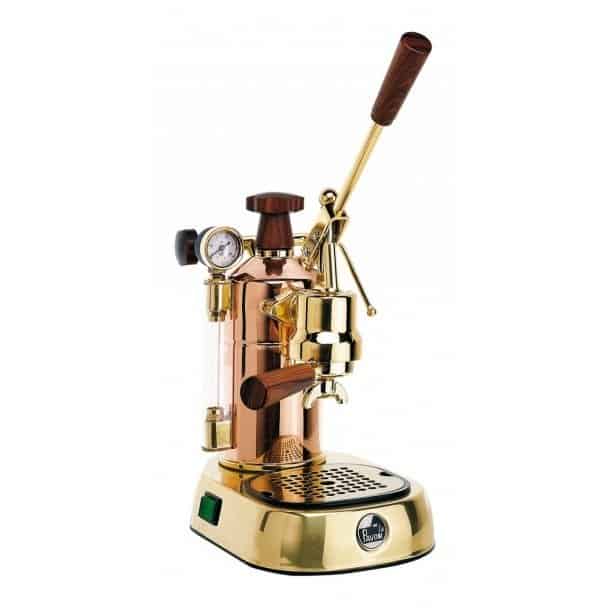The best manual lever espresso machines are like supercars. They represent the best of the best in coffee gear design, and feature outstanding specs. Clearly, they perform unlike any other tool you’ve used before.
What’s more, manual espresso machine mastery is a rite of passage for many aspiring baristas and espresso enthusiasts. But first, you need the right tool for the job.
So, keep reading for out top seven picks that will help you become an espresso guru.
At A Glance:
- Best Overall: Elektra S1C Microcasa
- Best Affordable Manual Press: Flair Espresso Maker
- Best for Beginners: La Pavoni EPC-8 Europiccola
How to Pick the Best Manual Espresso Machine
If you’re used to automatic espresso machines that make drinks with a touch of a button, the switch to a manual can be tricky. But believe us, if you want to master the art of pulling a shot, the manual machine is the only way to go.
Joining the other lever lovers will require you not only to learn new skills, but you’ll also need to adjust what you’re looking for in a machine. Automatic machines give you so many options to choose from, but as you would expect, the manual espresso machines are a little more niche. Here are a few of the things you should consider when purchasing a lever machine.
| Product | Details | Button | |
|---|---|---|---|
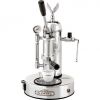
|
Elektra S1C Microcasa |
|
Click to Check Price |
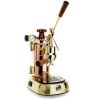
|
La Pavoni Professional Copper & Brass |
|
Click to Check Price |
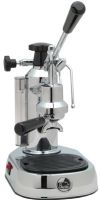
|
La Pavoni EPC-8 Europiccola |
|
Click to Check Price |
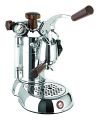
|
La Pavoni PSW-16 Stradivari |
|
Click to Check Price |
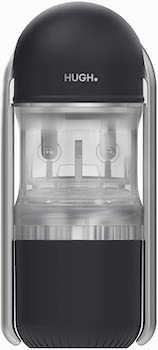
|
Leverpresso |
|
 See on Amazon
See on Amazon
|

|
Flair Espresso Maker |
|
 See on Amazon
See on Amazon
|
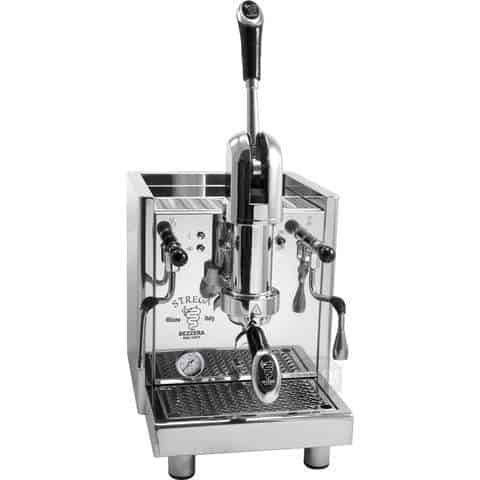
|
Lelit Bianca |
|
Click to check price |

- Medium-sized
- Chrome
- Pressure gauge

- Medium-sized
- Copper and Brass
- Pressure gauge

- Compact
- Stainless steel
- Pressure gauge

- Compact
- Stainless steel
- Pressure gauge

- Compact
- Mixed materials
- No pressure gauge

- Compact
- Stainless steel and aluminium
- No pressure gauge

- Large
- Stainless steel
- Pressure gauge
Size and weight
You will probably notice something about most of these manual espresso machines. Without the need for a pump or reservoir, lever espresso machines tend to be somewhat smaller than their automatic counter parts. But this doesn’t necessarily mean you can get them into smaller spaces. There are a lot more parts that stick out from the machine here, the lever in particular, which will need some room to move. With no outer casing, manual machines can get very hot, so it’ll need a bit of room on all sides to avoid burning other appliances.
The fact that some manual machines don’t require electricity might make them seem a good pick for a portable machine. But all of those shiny metal parts can make these things heavy. If you want to be able to travel with your lever machine, look for one that’s designed to be portable. It won’t have the same slick design, but it will be much easier to transport.
Material
The manual espresso machine is instantly recognizable with its all-metal design. But despite the good looks, this is not just about aesthetics. The type of metal will impact both the longevity of the machine, and the boiler’s ability to conduct and retain heat. Here are some of the most common materials and their pros and cons.
Copper – Copper is well-known as being an incredible conductor of heat, which is why it’s used in cookware and plumbing. But what you might not know that it has antimicrobial properties that help kill bacteria in water (1). The downside is that it’s very expensive and can sometimes leach into water.
Brass – As an alloy, brass is much easier for manufacturers to work with, and is considerably cheaper than copper. It doesn’t have the same thermal conductivity or stability as copper, but it is better than aluminum, which is used in many cheaper espresso machines.
Stainless steel – While thin stainless steel has very poor thermal retention, a boiler of thick stainless steel and insulation can provide incredible temperature consistency. It also has the advantage of being resistant to limescale, and will not leach in the way that copper does (2).
Chrome – A machine that’s listed as chrome will refer to the finish, and not actually the construction material for the boiler. It’s usually brass that has been chrome plated to give it increased durability, resistance to corrosion and a nice shiny finish (3). The downside to this is that the chrome plating can peel.
Travel espresso makers are the exception for this. There’s no boiler involved – you need to heat the water separately – so there’s no need for heat-conducting metal. They often use plastic to keep the weight down, so make sure you look for something that’s BPA-free.
Learning curve
At a glance you can see that these machines look a lot different to your average countertop espresso maker. In order to start perfecting your morning shot, there are a few things that you’ll need to learn – even if you’re already a whizz with a semi-automatic.
In any kind of automatic espresso maker, the machine generates the pressure and forces it through the grounds at the touch of a button. Whereas here, you are the one handling the flow of water through the coffee.
The most important of these is the lever, and there are two types:
- The spring piston works like wining up a toy. Pulling the lever builds up tension in the spring, and when you release the lever, the spring applies the pressure to the group head.
- With a direct lever machine, there’s no intermediary. The pressure you apply to the lever is what’s applied to the group head (4). Spring levers are easier to use, but a direct lever will give you more control.
Some machines have a pressure gauge to help you manage the flow, but on others, you just have to let the coffee be your guide! The best manual espresso maker for you is just around the corner.
7 Best Manual Espresso Machines
What is the Ferrari among lever espresso machines? Keep reading to find more about the models that made the cut. There is a manual coffee machine for every budget and style.
1. Elektra S1C Microcasa – Best Overall Lever Machine
Specifications
Size: 10” x 10” x 21”
- Weight: 22 pounds
- Material: Chrome
- Pressure Gauge: Yes
The Elektra S1C Microcasa has all the bells and whistles you want from a manual espresso machine. From the outstanding chrome-plated design to the high-quality brass boiler, this model is engineered to provide years of reliable service.
You should know that this is a spring-piston espresso maker. This means you pull down on the lever and once you release it the extraction process begins. The unit also features an analog pressure gauge. When the needle gets in the green area, it’s time for an espresso shot.
As for the brass boiler, it holds 60 oz of water and delivers steam that’s dry enough for you to easily froth milk for your cappuccino or latte. The steam wand is traditionally styled with a precision-engineered nozzle for optimal performance.
The S1C also comes with a sight glass which tells you how much water is in the system. Bear in mind, the heating element on lever machines needs to be submerged at all times. Otherwise, you risk damaging the machine or the heater.
In terms of size, this Elektra is a medium machine and it measures 10” x 10” x 21” and weighs 22 pounds. But, compactness is probably the least of your concerns when you get such a unit.
With a machine like this, you definitely want it front and center. Not crammed in between some cabinets.
1st-line Equipment
BEST SUITED FOR: The espresso fan looking for a lever machine that’s easy to operate and built to last a lifetime.
2. La Pavoni Professional Copper & Brass – Best Springless Lever Espresso Machine
Specifications
Size: 11.4” x 12.6” x 17.9”
- Weight: 12.1 pounds
- Material: Copper and Brass
- Pressure Gauge: Yes
Coming from one of the oldest manufacturers in the world, this La Pavoni is a force to be reckoned with. The copper and brass design is hard to miss and your guests are bound to love it. But there is more to this machine than meets the eye.
As said, this is a fully manual unit and there are no springs, pumps, or fancy electronics. This means that the whole extraction process is up to you, but you shouldn’t let this scare you. There is elegance in this kind of simplicity and the La Pavoni is pretty easy to use.
The 38oz boiler, which should be enough for about 16 double espressos, is the highlight of this great machine. It’s made of copper with a lacquer coating on top for easier maintenance and greater durability. Plus, the boiler’s interior is nickel-plated for better heat retention.
There is also a sight glass to see how much liquid is in the water tank. And you also get an analog pressure gauge to nail that 9 bar pressure required for a perfect espresso. The La Pavoni also has an internal temperature switch, so you don’t need to worry about it overheating.
The machine comes with an automatic and a standard steam wand which can be switched without any tools. Finally, you get an instructional video to start you off.
BEST SUITED FOR: Someone looking for a beautiful, fully manual machine to perfect your barista skills. This La Pavoni might be right up your alley.
3. La Pavoni EPC-8 Europiccola – Best Lever Machine for Beginners
Specifications
Compact
- Stainless steel
- Pressure gauge
The La Pavoni Europiccola has a good balance of price, features, and ease of use. As such, this is the perfect entry-level model that can help you hone your manual extraction skills.
What’s more, you get everything you need to start brewing right out of the box. The Europiccola has a measuring ladle, tamp, a screen holder and a screen. The most challenging part is to calibrate your grinder to get the ideal coffee grounds.
Like all La Pavoni espresso machines, the EPC-8 is built like a tank and it looks like a Ferrari. The Europiccola features polished stainless steel construction, an internal thermostat, and a traditional steam wand. It’s worth noting that the wand is not the machine’s strongest suit and the frothing can be tricky.
Other than that, you shouldn’t experience any problems with this machine. The unit is piston-operated and you should quickly master the extraction time. As for the capacity, the water tank holds 20oz which is enough to get about eight single espresso shots.
The EPC-8 is also a good choice if you are strapped for space. The machine measures 7” x 11” x 12” and weighs 14 pounds.
BEST SUITED FOR: Anyone looking to make an easy transition from an automatic or a semi-automatic espresso maker.
Related: Best Espresso Machines Under $1000
4. La Pavoni PSW-16 Stradivari – Best 16-Cup Lever Machine
Specifications
Size: 4.5” x 12” x 16.2”
- Weight: 15.6 pounds
- Material: Stainless Steel
- Pressure Gauge: Yes
Due to their outstanding design, La Pavoni machines can be recognized from a mile away. The PSW-16 Stradivari is no different, and it lives up to its legendary name.
The model in this review comes with a silver finish with wooden handles on the manual lever and valve knobs. If this is not your thing, you can get the same unit with a chrome finish and borosilicate handles and valve knobs. Aesthetics aside, great engineering and brewing capabilities are the main assets of this coffee maker.
The Stradivari has a 38oz brass boiler with nickel plating on the inside. There is also a dual frothing system to help you get the right cream for your cappuccino. Plus, an internal thermostat prevents overheating.
For some extra safety and convenience, the PSW-16 has a reset safety fuse and a recessed power switch. The machine also sports a mounted analog pressure gauge. Finally, you get a double spout portafilter, plus one and two-cup coffee baskets.
When it comes to size, this lever machine is a medium model and measures 4.5” x 12” x 16.2” and weighs 15.6 pounds.
BEST SUITED FOR: Someone looking for a machine with all the features to extract a perfect shot of espresso, and who has the budget to match.
5. Leverpresso – Best for Travel
Specifications
Size: 3.15” x 3.15” x 7.09”
- Weight: 1.1 pounds
- Material: Mixed materials
- Pressure Gauge: No
An espresso machine sadly isn’t on most holiday packing lists, but with the Leverpresso, all this could change. Weighing just 1.1 pounds, it really is light enough to consider truly portable, and the 3.15” x 7.09” size is compact enough to even fit in a handbag should you need to.
Unlike the other machines on the list, this little number works with dual levers, which you pull down on either side. This is a more consistent method of extraction for a machine this size, and according to the manufacturer will still get you 9 bars of pressure. There’s no pressure gauge, but you can track your progress thanks to the transparent Tritan plastic body (which by the way is BPA free).
The water chamber can take 120ml of water, so with the 18g portafilter you can extract full double shots. When purchasing you’ll also have the choice of pressurized or non-pressurized filter baskets – so it’s great for both newbies or the more experienced.
BEST SUITED FOR: Coffee connoisseurs on the go.
Related:
6. Flair Espresso Maker – Best Affordable Manual Press
Specifications
Size: 3.25” x 9” x 12.5”
- Weight: 5 pounds
- Material: Stainless Steel/Aluminum
- Pressure Gauge: No
The Flair Espresso Maker falls into the budget category, but you shouldn’t let the low price trick you. This machine has a lot of tricks up its sleeve, and is among the most portable on this list. What makes the Flair so special?
To begin with, this is the complete opposite of a super-automatic machine. There are no wires, plugs, or pumps; everything is done by hand and the manual lever puts you in charge of brewing. Also, you shouldn’t overlook the build quality.
The machine’s stand is made of aluminum and the brewing head is high-quality stainless steel. What’s more, you’d be hard-pressed to find another manual espresso machine with a detachable brewing head. Dimension-wise, the Flair measures 3.25” x 9” x 12.5” and weighs 5 pounds.
The weight might be in the upper range for press models, but the size is right on the money. The package includes a travel case, so you can easily take the Flair on the road.
BEST SUITED FOR: Those who want to get a taste of manual espresso brewing. It also works great as a secondary unit for travel or camping.
Related: Best Espresso Machines Under $200
7. Bezzera Strega – Best for Heavy Use
Specifications
Size: 27.95″ x 12.99″ x 17.72″
- Weight: 63.93 pounds
- Material: Stain less Steel
- Pressure Gauge: Yes
The typical manual lever machine might sit on the smaller end of things, but that doesn’t mean they’re not suitable for busy offices or even small coffee shops. This larger scale machine features a hefty 135oz water tank, and can also be plumbed in directly.
The Italian brand should know a thing or two about coffee. It was an Italian – Luigi Bezzera – who patented the first espresso machine back in 1901. The Bianca by Lelit continues the long tradition of Italian coffee machine production, but with modern features for precision brewing. This includes creating some of their own tech, such as a lever group that contains its own heating element for consistent temperatures.
The Bianca is actually a lever-pump hybrid, with a supporting vibratory pump for raid refilling of the 67oz boiler. The boiler works off a heat-exchange system, so there’s no delay in between pulling shots and steaming milk.
BEST SUITED FOR: Large households or small, specialty coffee shops.
The Verdict
Each model in this best manual espresso machines list was carefully selected, based on the most desirable characteristics a manual espresso machine could have. However, the Elektra S1 Microcasa stands out as the best of the bunch. If you factor in exceptional engineering, large water capacity, and ease of use, this model offers the best value for the money.
And let’s not forget, the S1C Microcasa is designed to be the centerpiece of the kitchen. The only tricky thing is finding a grinder that matches the Elektra’s Italian style.
FAQs
A manual espresso machine is a type of espresso maker that gives you complete control over the extraction process. These machines have a boiler, a pressure gauge, and a manual lever to control the brewing time and infusion.
There are two types of manual espresso machines – piston and spring-operated. These work a bit differently, but the final result is pretty much the same.
Yes, La Pavoni is good. The company is among the oldest espresso machine manufacturers with more than 100 years of tradition. Over the years, La Pavoni has perfected the manual espresso maker design and offers a huge selection of models.
You foam milk with the built-in steam wand. It’s best to pour cold fresh milk into a jug and insert the tip of the nozzle into the milk. You should also keep the wand close to the jug side to make a vortex.
Before you start the steaming process, don’t forget to run some steam into a fresh towel to clean the wand. This way you prevent impurities and milk residue from coming in contact with the fresh milk.
- Elert, G. (n.d.). Temperature of Steam in an Espresso Machine. Retrieved from https://hypertextbook.com/facts/2004/StaceyJohnson.shtml
- Rao, S. Prewetting: When to do it, when not to. (2016, October 28). Retrieved from https://www.scottrao.com/blog/prewetting-when-to-do-it-when-not-to
- The Certified Italian Espresso. (n.d.). Retrieved from http://www.espressoitaliano.org/en/The-Certified-Italian-Espresso.html
- Stamp, J. (2012, June 19). The Long History of the Espresso Machine. Retrieved from https://www.smithsonianmag.com/arts-culture/the-long-history-of-the-espresso-machine-126012814/

Coffee expert and industry insider, I’ve dedicated years to mastering the art and science of coffee making. From scrutinizing particle fineness to evaluating burr shapes, I delve into the minutiae that elevate coffee from good to exceptional. Whether it’s a complex pour-over or a robust espresso, my insights cater to those who don’t just drink coffee, but experience it.



